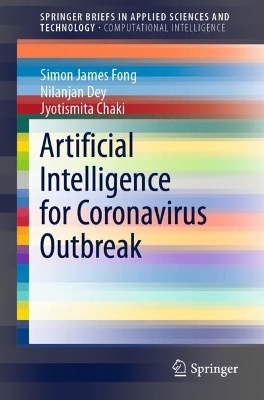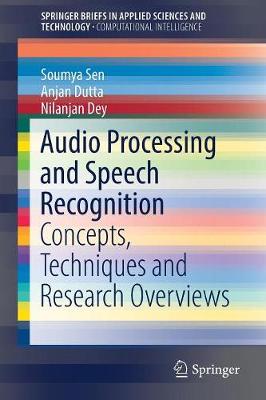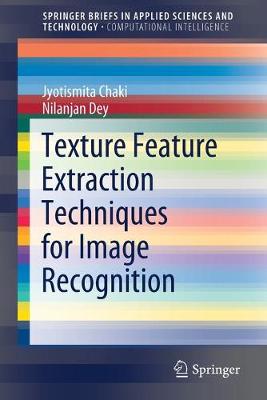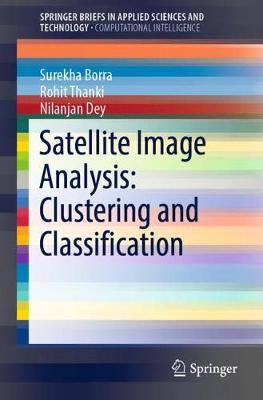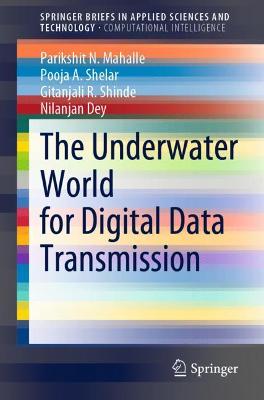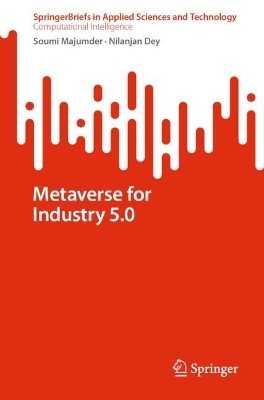SpringerBriefs in Computational Intelligence
7 total works
Artificial Intelligence for Coronavirus Outbreak
by Simon James Fong, Nilanjan Dey, and Jyotismita Chaki
The book discusses how AI can help fight this deadly virus, from early warnings, prompt emergency responses, and critical decision-making to surveillance drones. Serving as a technical reference resource, data analytic tutorial and a chronicle of the application of AI in epidemics, this book will appeal to academics, students, data scientists, medical practitioners, and anybody who is concerned about this global epidemic.
Audio Processing and Speech Recognition
by Soumya Sen, Anjan Dutta, and Nilanjan Dey
Opinion Mining in Information Retrieval
by Surbhi Bhatia, Poonam Chaudhary, and Nilanjan Dey
This book discusses in detail the latest trends in sentiment analysis,focusing on “how online reviews and feedback reflect the opinions of users and have led to a major shift in the decision-making process at organizations.” Social networking has become essential in today’s society. In the past, people’s decisions to buy certain products (and companies’ efforts to sell them) were largely based on advertisements, surveys, focus groups, consultants, and the opinions of friends and relatives. But now this is no longer limited to one’s circle of friends, family or small surveys;it has spread globally to online social media in the form of blogs, posts, tweets, social networking sites, review sites and so on.
Though not always easy, the transition from surveys to social media is certainly lucrative. Business analytical reports have shown that many organizations have improved their sales, marketing and strategy, setting up new policies and making decisions based on opinion mining techniques.
Texture Feature Extraction Techniques for Image Recognition
by Jyotismita Chaki and Nilanjan Dey
The book describes various texture feature extraction approaches and texture analysis applications. It introduces and discusses the importance of texture features, and describes various types of texture features like statistical, structural, signal-processed and model-based. It also covers applications related to texture features, such as facial imaging. It is a valuable resource for machine vision researchers and practitioners in different application areas.
Satellite Image Analysis: Clustering and Classification
by Surekha Borra, Rohit Thanki, and Nilanjan Dey
This book introduces readers to key concepts, methods and models for satellite image analysis; highlights state-of-the-art classification and clustering techniques; discusses recent developments and remaining challenges; and addresses various applications, making it a valuable asset for engineers, data analysts and researchers in the fields of geographic information systems and remote sensing engineering.
The Underwater World for Digital Data Transmission
by Parikshit N. Mahalle, Pooja A. Shelar, Gitanjali R. Shinde, and Nilanjan Dey
This book covers all small details about Underwater Sensor Networks (UWSN). Researchers can use this book as a prerequisite before starting any research on underwater networks or underwater applications. This book covers the introduction, challenges, different architectural models for UWSN, various attacks on UWSN, underwater applications, and networking layers. The target audience includes professors and students in engineering, and researchers and engineers working on marine applications. In academic level, the book is helpful for students having Networking and Information Security as elective subject and doing projects in Wireless Networks. It is also helpful for spostgraduates and Ph.D. researchers to learn basics of Underwater Sensor Networks.
This book provides a detailed picture of the metaverse for industry 5.0. In the context of Industry 5.0, the concept of the metaverse aligns with the vision of Web 4.0, representing a digital ecosystem where individuals and organizations collaborate in a human-centric approach to create personalized value.This virtual universe connects multiple interconnected worlds, enabling real-time interactions between users and computer-generated environments. By integrating technologies such as artificial intelligence (AI), virtual reality (VR), augmented reality (AR), mixed reality(MR) and the Internet of Things (IoT), the metaverse within Industry 5.0 aims to foster innovation and enhance productivity, efficiency, and overall well-being through tailored and value-driven solutions. This book explores the concept of the metaverse in the context of Industry 5.0, highlighting its definition, evolution, advantages, and disadvantages. It also discusses pillars of technological advancement, challenges, and opportunities, ethical issues including its integration into various sectors, i.e., healthcare, construction, manufacturing and others. The entry concludes with a proposal for a conceptual framework for integrating the human-centric metaverse.
